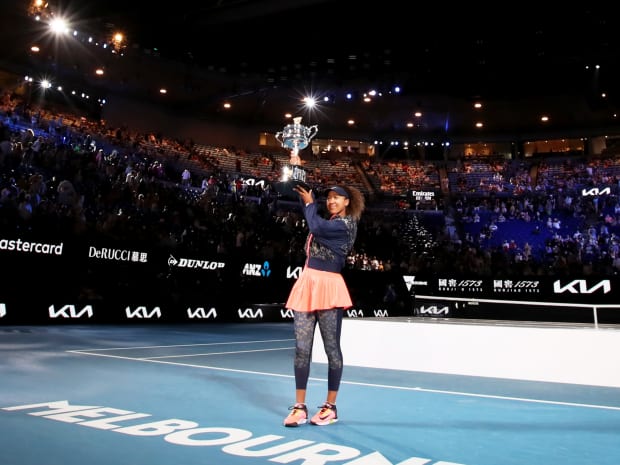Naomi Osaka's win over Jennifer Brady in the Australian Open final marks the fourth Major title of her soaring career
Naomi Osaka took a good, hard look at success at the 2018 US Open and, for the most part, has held her gaze ever since.
In Melbourne, she cemented her superiority in women's tennis with an authoritative 6-4, 6-3 win over Jennifer Brady in the 2021 Australian Open women’s final. This marks the fourth Major title of her soaring career and the continuation of her win streak, now up to 21.
Here are three thoughts on the match.

Heir to Serena
If this wasn’t peak Osaka, it was close. She overwhelmed her opponent with heavy, pace-laced strokes, especially off-angled backhands. And after a brief first-set hiccup, she cleaned up her game and ran off six games in the middle of the match, and closed like a champion.
Men’s tennis may wonder who will take over driving duties when the Big Three take their hands off the wheel. The women’s game has its heir to Serena Williams. It's not just the clip at which Osaka is winning—this is her fourth major in the last eight she has entered—but she has ascended with a Williams-esque blend of power, athleticism and cold-blooded resolve.
Brady's best is still ahead
Not wrongly, Brady will be disappointed by her result tonight. After getting to 4-4 in the first set, she simply lost the range on her strokes. The more she pressed, she more she missed. But that ought not to overshadow both her achievement of getting to the final, her first; her professional response to being in hard quarantine before the tournament; and more generally, her mid-career promotion. Barely a year ago, Brady lost in the first round in Australia, sending her ranking outside the top 50. Then a COVID hit, and—tennis’ answer to Taylor Swift—Brady used the pandemic to boost her career. By now, you’ve likely heard the story ad nauseam of her going to Germany to train with a new coach. She has emerged as a new player, both ferocious and organized. And her whipping forehand is now one of the formidable weapons on the women’s side. Last fall, she reached the semifinals of the U.S. Open (falling to Osaka in an extraordinary clash), and then improved on that result at the next hardcourt major. There’s so much to like here, both in terms of stroke production/ball striking and a level-headed, practical approach to the sport. Brady turns 26 in April. She is now up to No. 13. And you sense the best is yet to come.
Osaka driving WTA Gilded Age
Yet again, the women’s game leaves a Major on an up-note. The WTA Tour may not offer three players competing simultaneously with nearly 60 Majors among them. But this is a Gilded Age of another variety. An extraordinary quality of play. Budding rivalries. A cast of thoroughly likable players. Ages 16 to 40. From all over the world. With a diversity of playing styles and temperaments. If you could invest in sports, you would call your broker—or open your Robin Hood—and load up on women’s tennis. And right now, the driving force is Osaka. She came into this year as the highest-earning female athlete in the world. (This, as the Tokyo Games loom.) If she continues this level, she—and by extension women’s tennis—will only ascend as well.